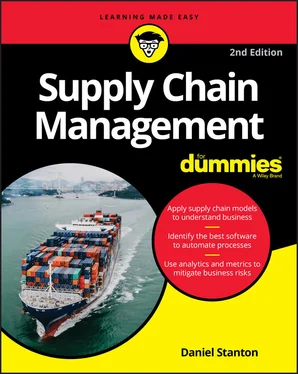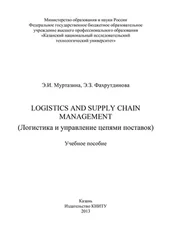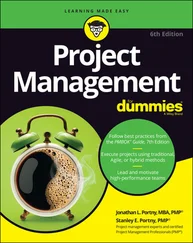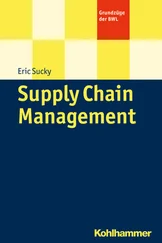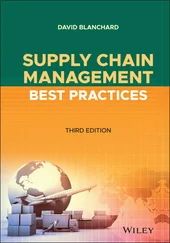Structuring Supply Chain Projects
Projects are the way that companies make changes. Because supply chains need to adapt to changes all the time, project management has become an important part of supply chain management. One common characteristic of supply chain projects is that they tend to be cross-functional. You may need to have logisticians and operations managers, human resources professionals, information technology experts, and accountants working together, which can create challenges in terms of communication and workload. First, you need to look at the unique characteristics of supply chain projects and how they can create management challenges. Then you need to have a set of principles that help you lead cross-functional projects and navigate these challenges effectively.
Managing cross-functional project teams
Supply chains connect companies and cut across the silos within a company. As a result, supply chain projects commonly involve team members from many functions. A supply chain project team might include people from business development, customer services, shipping, receiving, manufacturing, information technology, accounting, and human resources. Managing cross-functional supply chain projects is a great way to develop a broad network and a deep understanding of the complexity of supply chains. The project manager must master the use of influence, pay careful attention to communications, and help team members manage their priorities for the benefit of the team.
Bringing people with diverse skill sets together as a project team can be a great way to stimulate innovation and accelerate change.
Cross-functional project teams have some major challenges too. Three of the most common challenges for cross-functional project managers are authority and influence, communication, and prioritization.
Authority means that you have the ability to hire, fire, reward, and correct someone. Often, key team members report to managers in another division in the company and are only loaned to the project. This is an example of a matrix organization. In matrix organizations, it can be difficult for the project manager to address performance issues directly because they do not have the authority to do so. If the project manager doesn’t have the authority to manage the team members, they will need to rely on influence to keep all the team members pulling in the same direction.
Experts in any field have their own tools, rules, and language. In supply chain management, the same word can mean something different things depending on the context. Transportation companies (such as steamship lines and trucking companies) refer to their customer as the shipper, whereas their customers often use the term shipper to describe the transportation company. The project manager needs to be able to translate among functions and encourage people to explain what they’re trying to say without using jargon.
When someone is asked to work on a project, that person may not get to stop working on other things; they may be working on several projects. If one of the other projects requires more time and attention, you must make sure that your project gets enough support to avoid getting into trouble. Anticipate potential problems so that you can make formal arrangements. You might make an agreement with the team member’s boss to ensure that your project has priority, for example. Or perhaps the team member’s boss may commit a certain number of hours each week to your project.
Creating cross-functional project plans
One of the best ways to deal with the challenge of leading a cross-functional project is to have a solid project plan. Building the plan gives everyone a chance to provide input and catch interdependencies. Human resources, for example, may not be able to start training employees in a new process until the necessary equipment has been delivered and installed. An integrated, cross-functional project plan makes it easy to see these connections and provides a clearer picture of the time required to complete a project. Creating an integrated plan also provides a natural opportunity for anyone on the team to ask for clarification on unusual words or jargon.
You can use many approaches to build an integrated project plan, but the following system works best for me:
1 Bring representatives from all the necessary functions together for a planning meeting.Representatives may include people from logistics, operations, information technology, human resources, and accounting.
2 Ask the team to come up with a list of deliverables. Deliverables are clearly defined results that the project must produce. To tell whether a deliverable is a good one, use the Done/Not Done test. You should be able to ask whether a deliverable is done or not. The answer shouldn’t be “Almost,” “Mostly,” or “It’s 64.67 percent done.” The answer should be “Yes, it’s done” or “No, it’s not done.”
3 Ask the team to create ten tasks for each deliverable.You might ask the team members, “If you were to summarize what it takes to complete this deliverable in 10 steps, what would those steps be?” Each step is a task. A structured list of tasks, like the one in Figure 4-3, is called a work breakdown structure (WBS). I prefer that deliverables and tasks start with verbs, which makes it easy to tell what needs to be done. “Design receiving process” is more descriptive than simply “Receiving process,” for example. FIGURE 4-3:Sample work breakdown structure.
4 Ask the team to decide which tasks have to be completed before another task can begin.Relationships among tasks are called dependencies . The task that needs to happen first is called a predecessor . The task that has to wait is called a successor . For small, simple projects, you may be able to track dependencies manually, but in most supply chain projects, the dependencies make the projects complicated. Figure 4-4 shows a network diagram that illustrates the predecessor and successor relationships between tasks. Using project management software to track tasks and dependencies can help you avoid mistakes and save a lot of time. FIGURE 4-4:Sample network diagram.
5 Evaluate the timeline, and crash the plan.Dependencies often mean that it takes longer to complete a project than anyone expected or considered to be reasonable. At that point, you need to look for logical ways to shorten the timeline. This process is called crashing or compressing the project plan.Start by looking at the tasks that are driving your schedule — the ones that are taking the longest time to complete. The longest series of tasks is called the critical path . The only way to shorten a project is to change the tasks on the critical path. Perhaps some tasks don’t need to occur in sequence or in series. Instead, those tasks could run at the same time or in parallel, or they could be independent of one another. Continue analyzing the tasks on the critical path until you have a timeline that seems reasonable to the team and to your sponsor. Creating a list of project deliverables and tasks is relatively easy and can be done with a word processing or spreadsheet program, but calculating project timelines and the critical path is cumbersome work. Project management software does this work automatically, which saves a lot of time when you’re crashing or revising a project plan.
When lots of people are working on a project, they often have different opinions about their roles and responsibilities. You need to establish a clear understanding of what everyone is doing to make sure that all the tasks are completed. It’s much easier to set expectations up front than to confront misunderstandings later on.
Читать дальше
